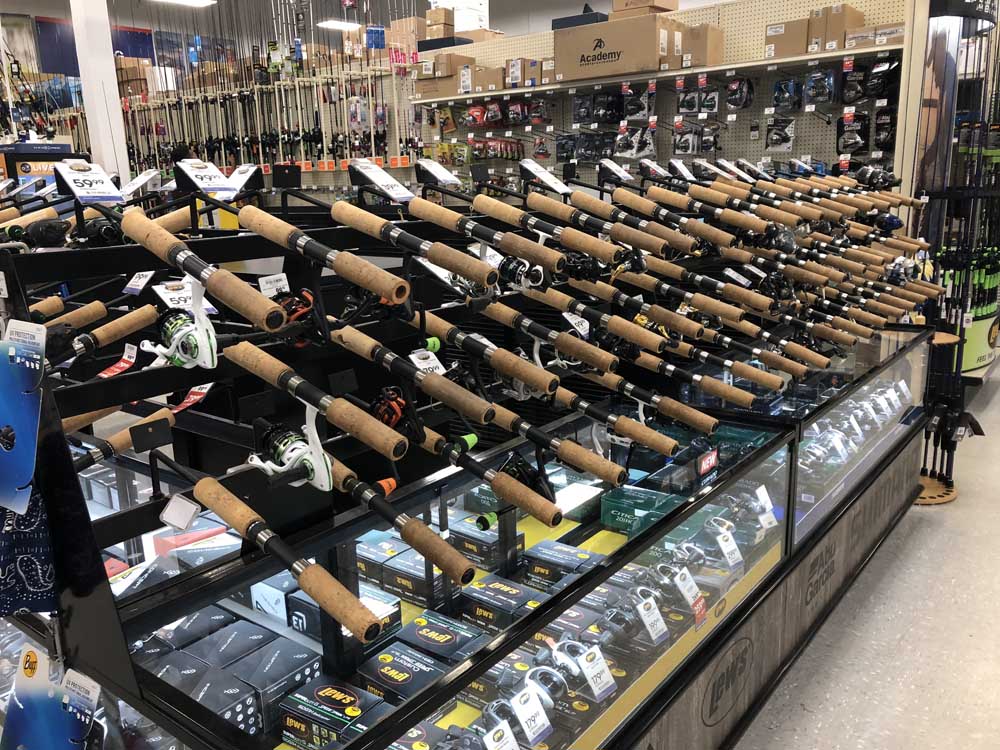Expanded trade war could bite baits, already hitting boats and motors
Published 12:32 am Tuesday, June 26, 2018

- Fishermen could see costs going up for tackle if a trade war escalates. Some components for boats and electronics have already been impacted as have the costs facing American boat builders importing their products.
I probably know about as much about trade tariffs as President Trump does about fishing, but it seems like all this talk of a trade war could become a pain in fishermen’s pocketbooks.
“From what I have seen so far, fishing tackle hasn’t been called out specifically and attacked with U.S. import or Chinese, European Union, Canada, Mexico import tariffs,” said Scott Gudes, vice president of government affairs with the American Sportfishing Association. “A lot of tackle manufacturing went overseas to survive economically by the 1990s. I fear this is an escalating trade war and more and more products and sectors are going to be caught up and hurt in it.”
Trending
According to Rob Southwick of Southwick Associations, an outdoors industry research group, the U.S. imports just over $698 million worth of freshwater and saltwater fishing tackle annually. Two-thirds, $457 million, of that comes from Chinese manufacturers.
The shift by companies to have their products manufactured outside the U.S. really took hold in the 1970s. Companies found that cheaper labor and material costs made it easier to have lures, reels, rods and terminal tackle made elsewhere then shipped into the U.S. Fishermen bought in because they liked both the price and, in some cases, the quality and innovation.
According to a list compiled by Southwick, there are only three categories of tackle imported into the U.S. in which China produces less than 50 percent — artificial baits, fishing line and rod parts and accessories. In the case of inexpensive and mid-range priced reels, fishing nets and rods, China is responsible for 89 percent or more of the products brought into this country.
Of course, the saber-rattling over tariffs is not just with China. Manufacturers in other countries that either produce products for U.S. companies or import under there own brands could also be hit.
And you can only have a trade war if there are two sides. That means the remaining companies flying the homegrown banner could see their products they ship to other markets hit by higher import taxes in retaliation. The boating industry is already feeling the hit-back and sales are taking a hit and layoffs are looming.
“The tariffs on steel and aluminum combined with retaliatory action by the European Union, Canada and Mexico is really devastating to the U.S. recreational boat and fishing boat sector. Our friends at National Marine Manufacturers Association are putting out new and alarming information on an almost daily basis,” Gudes said.
Trending
He explained the fishing boat industry is a “Made in the U.S.A.” industry, and while most fishermen in East Texas relate to Kilgore-made Skeeter-type fiberglass boats, more than 40 percent of U.S.-manufactured boats feature aluminum as their primary component.
“So the tariffs will significantly drive up production and sales prices. And as a double whammy, in retaliation the Europeans are adding a 25 percent import tariff against imported boats from the U.S.A. regardless of production material whether fiberglass or aluminum. Canada and Mexico are placing tariffs on boats as well,” Gudes said.
“Manufacturers are already seeing order cancellations resulting in tens of millions of revenue lost last week alone,” said Nicole Vasilaros of the National Marine Manufacturers Association.
“U.S. boats are the only recreational product on all three of our major trading partners retaliation list. Seventy percent of U.S. boat exports are destined for the Canadian, European or Mexican markets. For many manufacturers, exports account for 10 to 25 percent of their business. By freezing out U.S. companies, this will impact U.S. jobs directly,” Vasilaros added.
NMMA is projecting at least a $2,000 increase on a 40 to 60 horsepower engine and that aluminum boat makers are looking at a 210 percent combined cost increase.
For bass fishermen, the biggest hit may come in electronics.
“Navigational equipment, fish finders and marine electronics are all on the Chinese 301 list facing a 25 percent tariff,” Vasilaros said.
Depending on how a trade war plays out, it could prove to be a boon for companies like Tyler’s Creme Lure that continue to produce in-house.
What it means for other companies, and fishermen, is something that those who know more about economics will have to project.
“With trepidation, we are following daily,” Gudes said.



